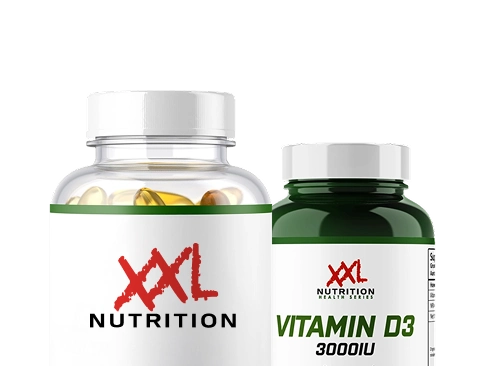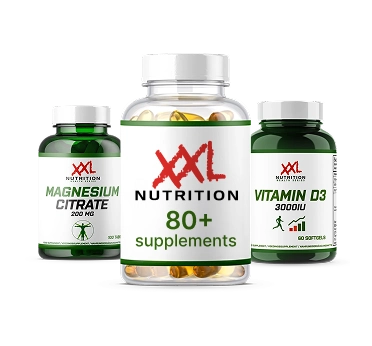Until recently, the effects of menstruation on athletic performance were overlooked or underestimated. Training programs rarely accounted for hormonal shifts, and female athletes were often expected to perform consistently regardless of where they were in their cycle. But research has changed that understanding.
In this article, we’ll explore how to deal with your period during sports. We’ll cover practical strategies for adapting training and nutrition, and how tools like symptom tracking and at-home hormone testing can help athletes perform at their best in every phase of the cycle.

How does the menstrual cycle affect female athletes?
The menstrual cycle can significantly influence athletic performance, but its effects vary from athlete to athlete. While some notice only minor changes, others experience clear shifts in strength, endurance, and coordination as hormone levels fluctuate throughout the month. Let’s get into detail.
Follicular Phase (Day 1–14)
As menstruation begins, both estrogen and progesterone are at their lowest. Energy levels may dip briefly, especially for those who experience cramping or fatigue triggered by prostaglandins. But as bleeding subsides, estrogen gradually climbs—and with it, many athletes notice a rebound in mood, motivation, and strength.
Estrogen’s rise isn’t just about feeling better. It promotes muscle repair and growth, enhances pain tolerance, and improves neuromuscular coordination. Several studies, including one published in PubMed Central, confirm that strength training in the late follicular phase often results in better muscle gains.
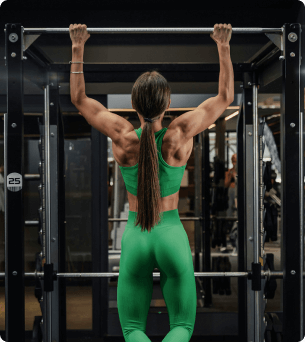
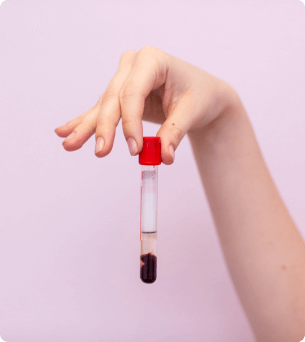
This is why many athletes and coaches now tailor heavy lifting or high-intensity sessions to this window. The hormonal environment supports not only more strenuous efforts but also faster recovery.
Ovulation (Around Day 14)
Ovulation marks a peak. Estrogen and testosterone surge, creating what some sports scientists call the “performance sweet spot.” Power output, speed, and mental sharpness often reach their highest levels. It’s no coincidence that some elite athletes, including professional sprinters and weightlifters, report their personal bests aligning with this phase.
But there’s a trade-off. Elevated estrogen also increases ligament laxity. For athletes in sports that demand cutting, jumping, or rapid changes in direction, like soccer, basketball, or gymnastics, this phase carries a heightened risk of injuries, especially anterior cruciate ligament (ACL) tears. Hormonal fluctuations in menstruation can also affect coordination and injury risk. Coaches understanding this dynamic often incorporate additional stability work or modify movement patterns during this period.

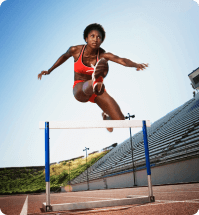

Luteal Phase (Day 15–28)
As progesterone rises, the body goes through subtle but important changes. Core temperature increases, which can put more strain on the heart—especially during endurance training or events in hot weather. Some athletes notice they tire more quickly or feel a slight drop in stamina. Mood changes and bloating are also common.
Endurance performance often takes a hit. Research from Penn Medicine and other studies (PMC7916245) shows that high progesterone can make it harder to regulate body temperature and can increase how hard workouts feel. Because of this, many athletes focus on moderate-intensity training, technical skills, or active recovery during this phase instead of peak competition.
Menstruation (Day 1–7 of New Cycle)
Menstruation begins with a drop in estrogen and progesterone. This phase can bring discomfort, cramps, low energy, or heightened pain sensitivity for some athletes. However, contrary to popular belief, the bleeding itself rarely limits physical performance. Instead, it’s the hormonal drop leading up to menstruation that affects energy levels and pain thresholds. Once cramps subside, some athletes experience renewed energy and relief from premenstrual symptoms.
However, there are cases where the experiences are different. Endurance athletes, for example, report strong performances even during menstruation, especially when using heat therapy, pain management strategies, or adjusting nutrition to address issues like iron loss. This is supported by most umbrella reviews which conclude that these effects are not universal, reinforcing the importance of individual tracking and personalization.




So, do hormones affect athletic performance? Yes—but the effects vary.
How to deal with your period during sports
For female athletes, managing periods isn’t about avoiding training—it’s about working with your body’s physiology to maintain performance and reduce discomfort. With the right strategy, most can continue training effectively through every phase of their cycle.
Monitor symptoms, not just the calendar
Despite what many think, it’s not menstruation (the bleeding) that impairs athletic output. The real challenge is the premenstrual hormonal drop—the sharp decline in estrogen and progesterone, which can affect pain tolerance, energy levels, and emotional state. Once bleeding begins, some athletes even experience relief from premenstrual symptoms and regain focus and stamina.

Proactively manage iron levels
Menstruation can lead to cumulative iron depletion, especially for athletes with heavy periods, endurance athletes, or those following plant-based diets. This isn’t just a long-term concern—even marginal iron deficiency can reduce VO2 max, delay muscle recovery, and increase perceived exertion.
Professional recommendations include:
- Test ferritin every 6–12 months, especially for runners, cyclists, and swimmers.
- Consult a sports physician or dietitian before taking iron supplements.
- Avoid self-supplementing, as excess iron can cause stomach upset or, rarely, iron overload.
Foods rich in heme iron (found in meat and poultry) offer the highest bioavailability. Combining non-heme iron sources (like lentils or spinach) with vitamin C can boost absorption for plant-based athletes.

Evidence-based supplement strategies
Many athletes grab common supplements without knowing whether they’re effective for their cycle-related challenges. Here’s what the research and leading sports dietitians suggest:
- Magnesium (250–400 mg/day): Shown to help reduce cramping, improve muscle relaxation, and support mood stability.
- Omega-3 fatty acids (1–3 grams/day): May lower prostaglandin production, reducing menstrual cramps and systemic inflammation.
- Vitamin D: Supports immune function and muscle recovery, which is especially critical for athletes training indoors or in low-sunlight regions.
- Calcium: Helps with muscle function and may ease PMS-related water retention and bloating.
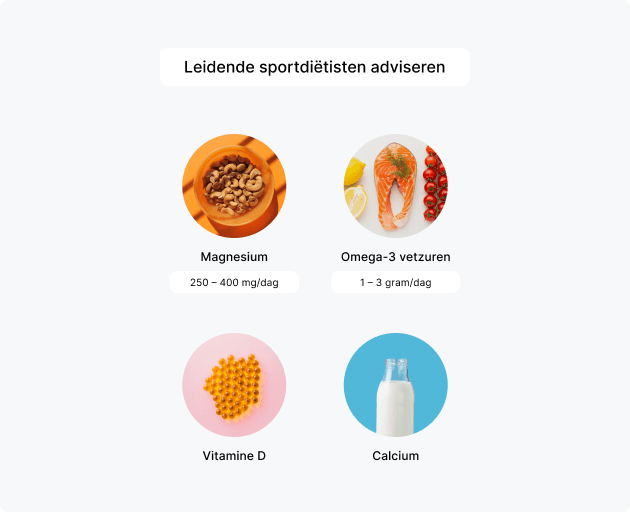
However, blood testing and professional guidance should dictate supplementation, not trial and error.
Adapt training without sacrificing progress
Athletes don’t need to avoid training during their period. Instead, they should:
- Modify intensity on days with cramps or low mood, but keep moving.
- Use dynamic warm-ups to ease cramps and joint stiffness.
- Monitor hydration, as hormones affect fluid balance.
- Select supportive gear, such as menstrual cups or period-proof activewear.
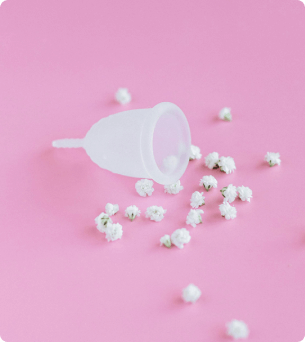
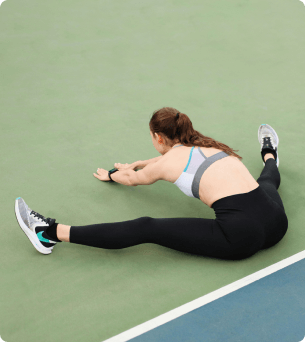
Build psychological resilience
Sports psychology research confirms that anticipating cycle-related challenges and having coping strategies improves outcomes. Techniques like mindfulness, cognitive reframing (“this discomfort is temporary”), and positive self-talk can help athletes push through difficult sessions without creating negative mental associations with training during their period.
Key insight: Your period is not an automatic barrier to peak performance. With cycle tracking, iron monitoring, personalized supplements, and flexible training, athletes can maintain or enhance performance throughout their menstrual cycle.
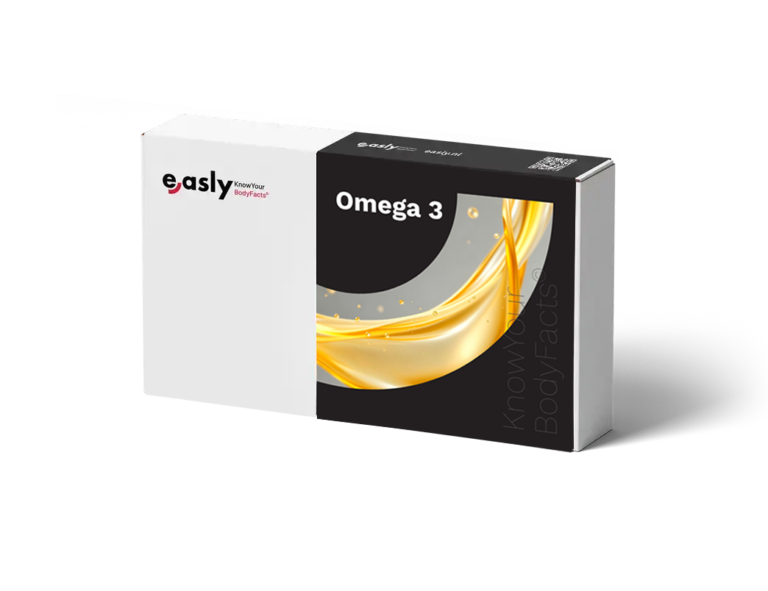

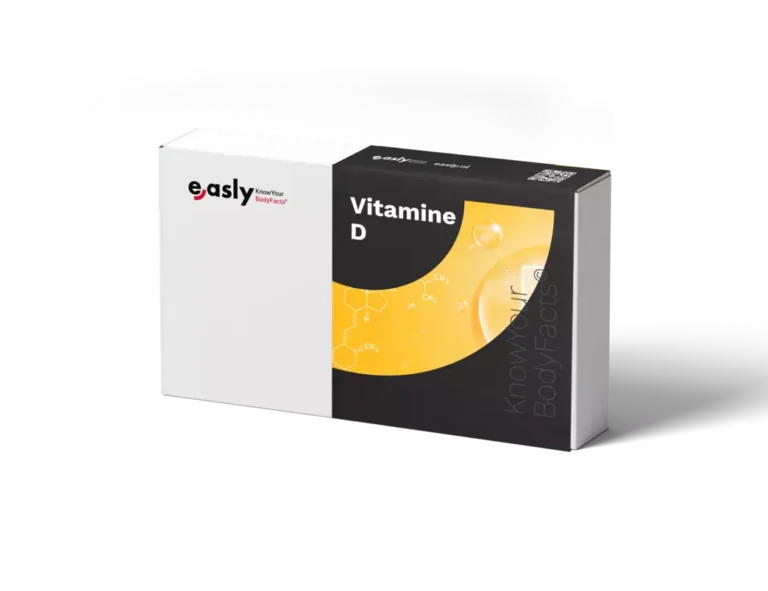
What should you not do during your period?
For most athletes, there’s little that must be avoided during menstruation. However, certain practices can increase discomfort or risk, especially when symptoms are at their peak or when underlying health concerns exist.
- Don’t ignore severe symptoms. Mild cramps or fatigue are common, but severe pain, heavy bleeding, or dizziness can indicate conditions like endometriosis, fibroids, or anemia. Training through these symptoms without medical advice can worsen both performance and long-term health.
- Avoid overloading intensity. While exercise can ease symptoms, pushing high-intensity efforts when experiencing cramps, fatigue, or mood changes can increase injury risk. Flexible training plans that adjust to daily symptoms are safer.
- Stay on top of hydration. Period hormonal changes can alter fluid and electrolyte needs. Poor hydration can worsen fatigue and reduce endurance, especially in heat.
- Don’t self-prescribe painkillers or supplements. Overusing NSAIDs can harm digestion and muscle recovery. Supplements should only be taken after professional testing and advice.
- Acknowledge emotional changes. Hormonal shifts can affect mood, focus, and motivation. Ignoring mental health can lead to burnout and reduced performance.
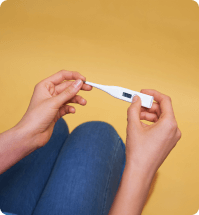


Why do female athletes stop having periods & prevention
When female athletes experience missed periods or their cycle stops entirely—a condition known as amenorrhea—it’s often a signal that the body is under too much stress or not receiving enough fuel to support both athletic demands and normal reproductive function.

Causes of missed periods in athletes
The most common cause is low energy availability (LEA), where the calories consumed are insufficient to cover both exercise and essential bodily functions. This can happen intentionally, through restrictive dieting, or unintentionally when training volume increases without adequate nutritional adjustments.
Other contributing factors include:
- High training loads combined with inadequate recovery.
- Chronic psychological stress from performance pressure or body image concerns.
- Low body fat percentages, which can disrupt estrogen production.
- Medical conditions, such as polycystic ovary syndrome (PCOS) or thyroid disorders.


When energy availability remains low over time, the body prioritizes survival functions over reproduction, leading to hormonal suppression. Estrogen and progesterone levels fall, ovulation ceases, and menstruation stops.
This condition, once called the “female athlete triad,” is now understood as part of Relative Energy Deficiency in Sport (RED-S), which can affect not just reproductive health but also bone density, cardiovascular function, and mental health.
Prevention and management
The primary strategy is ensuring adequate energy intake relative to training demands. This often requires working with a sports dietitian to assess calorie needs and develop nutrition plans that support both performance and hormonal health.
In many cases, restoring regular menstruation requires nutritional rehabilitation, reducing training load, and in some instances, medical treatment under the supervision of a sports medicine physician or endocrinologist.
In summary
So, how do female athletes manage periods while maintaining peak performance? The answer lies in personalized cycle tracking and adaptive training plans. The menstrual cycle is not a limitation, but a natural rhythm that, when understood, can help athletes train and recover more effectively.
However, missing periods or severe symptoms should never be overlooked. They may signal low energy availability or underlying health conditions that can compromise both performance and long-term health.

Regular monitoring of hormone and iron levels using at-home tests such as those available from Easly—can help athletes detect imbalances early and adjust their training and nutrition before performance is affected.
Protect your health today to reach your full potential.
Sources:
- Solli, G. S., Tønnessen, E., & Sandbakk, Ø. (2020). The training characteristics of the world’s most successful female cross-country skier. Frontiers in Physiology, 11, 387.
- McNulty, K. L., Elliott-Sale, K. J., Dolan, E., Swinton, P. A., Ansdell, P., Goodall, S., … & Hicks, K. M. (2020). The effects of menstrual cycle phase on exercise performance in eumenorrheic women: A systematic review and meta-analysis. Sports Medicine, 50(10), 1813–1827.
- Hackney, A. C. (2020). Hormonal response to exercise and training: A short review. Sports Medicine and Health Science, 2(2), 105–109.
- Mountjoy, M., Sundgot-Borgen, J., Burke, L., Carter, S., Constantini, N., Lebrun, C., … & Ljungqvist, A. (2014). The IOC consensus statement: Beyond the Female Athlete Triad—Relative Energy Deficiency in Sport (RED-S). British Journal of Sports Medicine, 48(7), 491–497.
- Tenforde, A. S., & Barrack, M. T. (2016). Nutrition and the female athlete: From the adolescent to the menopausal years. Clinics in Sports Medicine, 35(4), 659–680.
- Elliott-Sale, K. J., McNulty, K. L., Ansdell, P., Goodall, S., Hicks, K. M., Thomas, K., … & Hackney, A. C. (2021). Females are not small males: Sex differences in sport and exercise. Sports Medicine, 51(5), 865–882.
- Piper, T. J., Gaskins, A. J., & Missmer, S. A. (2021). Iron deficiency and its implications in female endurance athletes. Current Sports Medicine Reports, 20(2), 85–90.
- Apps for tracking menstrual cycle and athletic performance:
FitrWoman: https://www.fitrwoman.com
Clue: https://helloclue.com - Easly Hormone & Iron Tests. Easly.nl — Offers at-home hormone and micronutrient testing kits tailored to female athletes.





